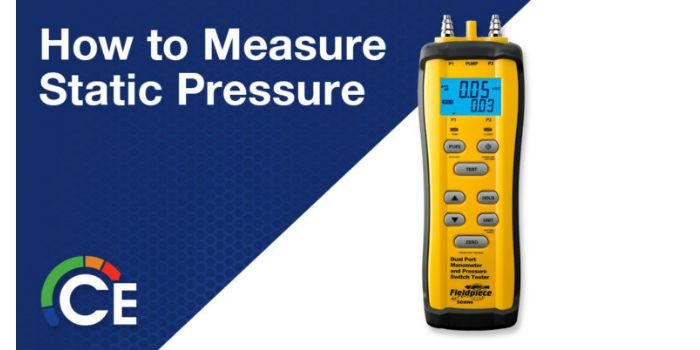 International. Static pressure is an important measure of HVAC; think of it in terms similar to your own blood pressure. Anything too high or too low is problematic.
International. Static pressure is an important measure of HVAC; think of it in terms similar to your own blood pressure. Anything too high or too low is problematic.
Specifically, static pressure refers to the amount of air pressure within the air ducts of a system. Too high pressure can lead to damage to HVAC equipment (such as blower motors) and other ductwork problems. Static pressure that measures too low, on the other hand, can result in poor airflow, which can make it difficult for an HVAC system to maintain a comfortable temperature.
How static pressure is measured and calculated
All HVAC technicians should know how to correctly measure and calculate static pressure, as it is one of the most common troubleshooting steps they can perform. The whole process should take no more than five minutes. It is relatively simple, but some special tools and specific steps are required that need to be taken for the most accurate measurement.
The basic tools needed to measure static pressure include:
- A quality pressure gauge and carrying case.
- Rubber tube / neoprene
- Static pressure tip
- A 3/8-inch bullet-tipped bit
- 3/8-inch plugs
Start by identifying the points in the pipeline where you plan to test using the pressure tips and test ports. Use the drill bit to drill the holes before inserting the ports, which should be connected to your pressure gauge. Once the ports are in place, take the necessary readings with your pressure gauge. Be sure to take both a supply and return measure.
Once you have these two measurements, calculate the total static pressure by adding the static supply pressure figures and the return static pressure figures to find your final number.
Solving high and low static pressure problems
Once you have the measurements of the total external static pressure of your pressure gauge, refer to the product data of the equipment you are reviewing to determine the CFMs of the system. Anything significantly higher or lower should be addressed, especially if there are obvious problems in the system.
There are many potential causes of high static pressure, including poor airflow and blockages in the system. In some cases, a clogged air filter could even lead to a high static pressure reading, so this is a good place to start.
For low static pressure, leaky ducts are often the cause, although a weak HVAC fan may also be the culprit. Incorrectly sized ducts can also cause a low static pressure reading.
The bottom line
Being able to measure and calculate static pressure is a basic, though important, skill for any HVAC professional. Investing in the right quality tools and CE pressure gauges will make taking accurate measurements much easier.
Source: Carrier Enterprise.














